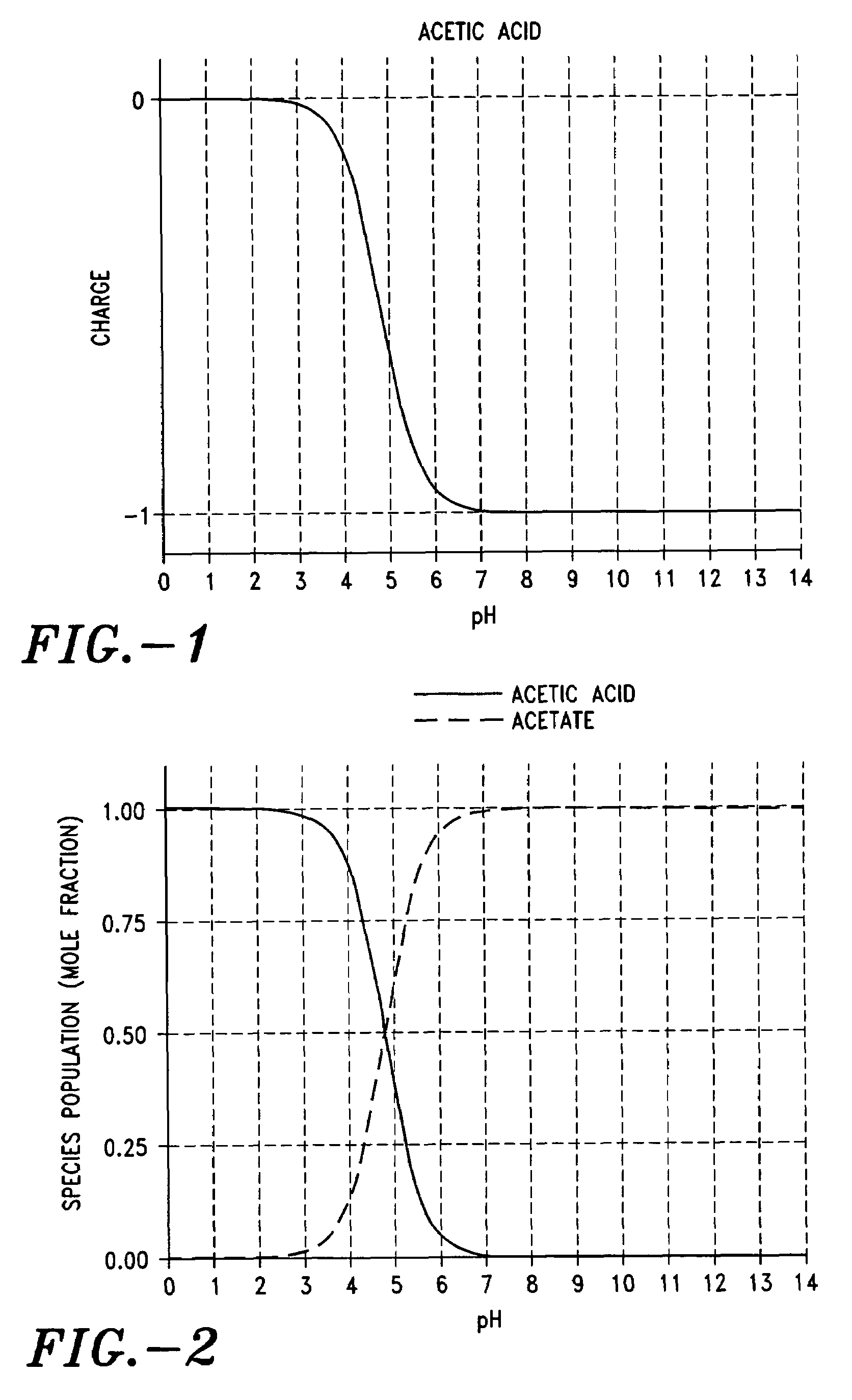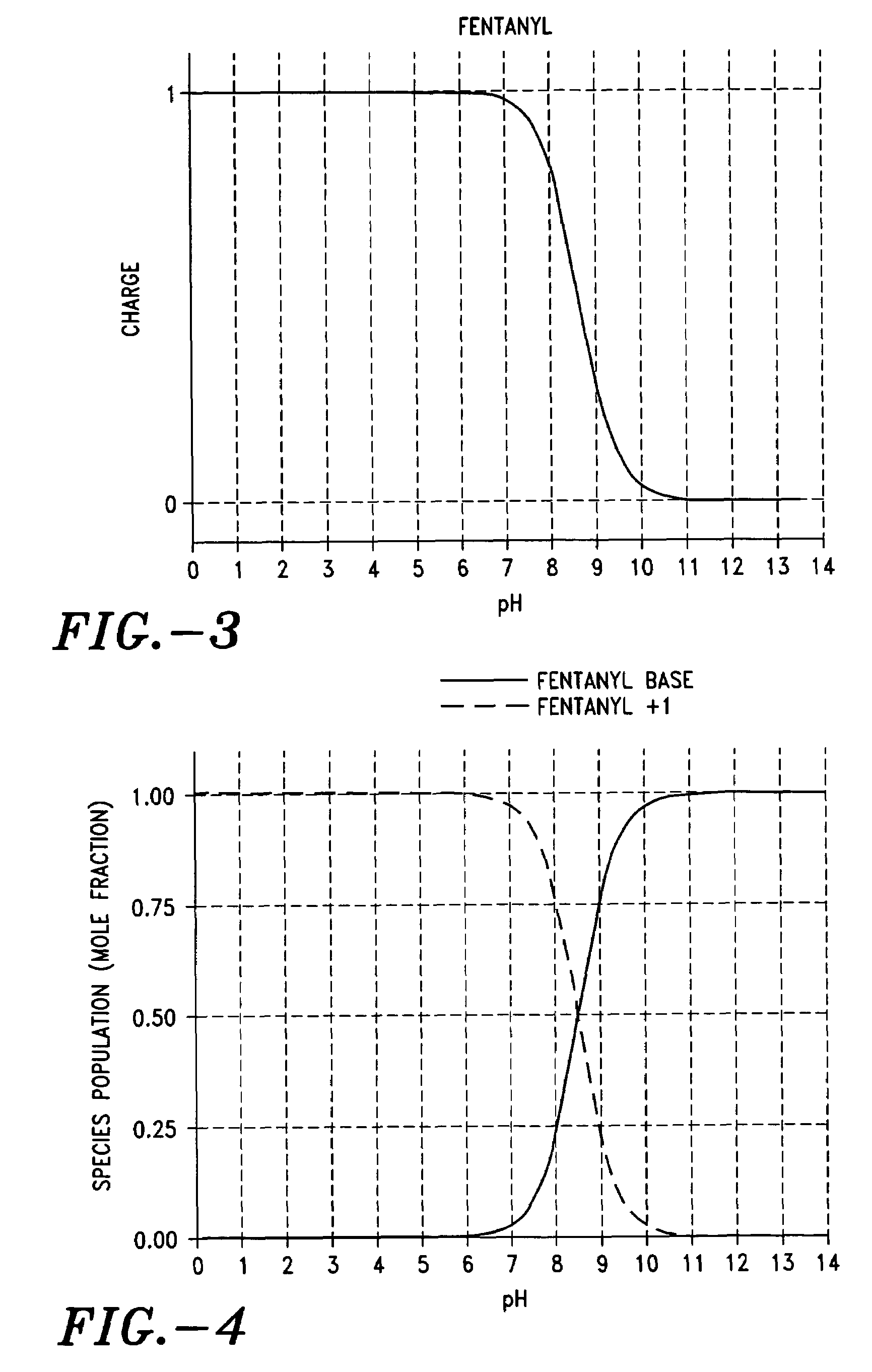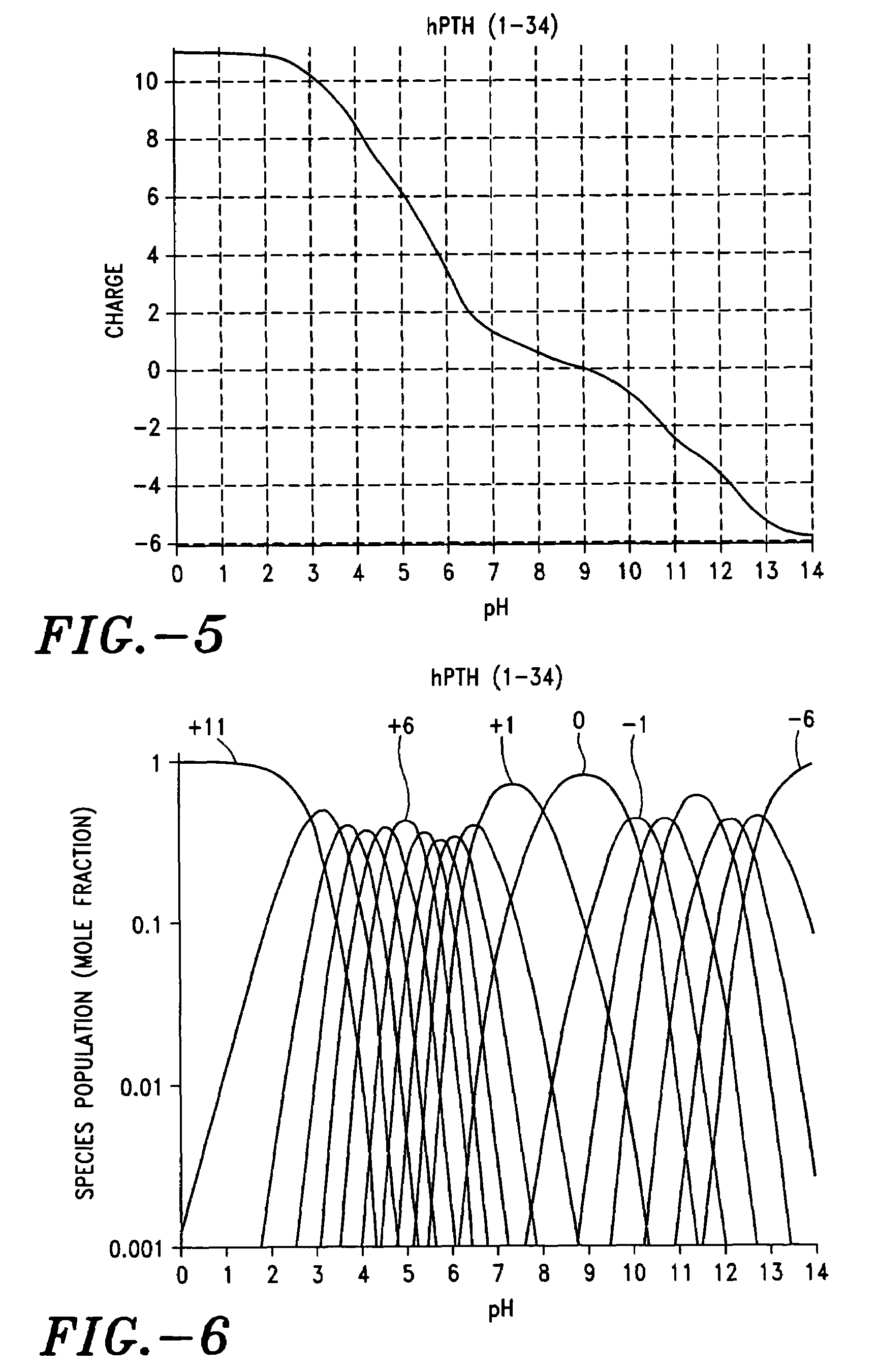Formulations for coated microprojections containing non-volatile counterions
a technology of non-volatile counterions and microprojections, which is applied in the direction of depsipeptides, peptide/protein ingredients, inorganic non-active ingredients, etc., can solve the problems of poor patient compliance, many drugs such as aspirin have an adverse effect on the digestive tract, and many medicaments are completely ineffective or radically reduced efficacy, so as to increase the amount of uncharged biologically active agents and less soluble effects
- Summary
- Abstract
- Description
- Claims
- Application Information
AI Technical Summary
Benefits of technology
Problems solved by technology
Method used
Image
Examples
example 1
[0197]FIG. 1 shows the charge profile of acetic acid (pKa 4.75) as a function of pH. At pH below about 2.5 the carboxyl group of the acetic acid is completely protonated and thus there is no charge on the molecule. As the pH increases from about 2.5 to about 7, more and more of the carboxyl moieties become ionized and thus forming the negatively charged acetate ion. At about pH 7, all of the carboxyl groups are ionized.
[0198]FIG. 2 shows the mole ratios of acetic acid and acetate. At pH 0, with the carboxyl group of acetic acid fully protonated, there essentially only acetic acid, thus the mole fraction is 1. At about ph 2.5, there ionization of the carboxyl group begins and the solid curve representing acetic acid in graph starts to move downward. At the same time, the dashed line, representing the ionized acetate, starts to move upwards off of the 0.00 line. At about pH 4.7 there are equal numbers of charged and uncharged moieties. At pH greater than about 7, there is no longer an...
example 2
[0205]Several aqueous formulations containing hPTH(1-34) were prepared. These formulations contained the volatile counterion acetic acid. Several formulations contained additional non-volatile counterions hydrochloric acid, glycolic acid, or tartaric acid (see Table 1). Microprojection arrays (microprojection length 200 μm, 595 microprojections per array) had a skin contact area 2 cm2. The tips of the microprojections were coated with these formulations by passing the arrays over a rotating drum carrying the hPTH(1-34) formulations using the method and apparatus disclosed in U.S. patent application Ser. No. 10 / 099,604 filed Mar. 15, 2002, which is hereby incorporated by reference in its entirety. Four successive coatings were performed on each microprojection array at 2-8° C. The amount of peptide coated on the arrays was evaluated by ultraviolet spectroscopy at a wavelength of 275 nm. Scanning electron microscopy revealed that the solid coating had a very smooth surface with no evi...
example 3
[0210]In order to demonstrate depletion of coatings containing volatile counterions, we coated 1 cm2 titanium disc with a pH 5 aqueous formulation made by solubilizing 20 wt % of the acetate form of a peptide, an hGRF analog. Following coating, each disc was stored under 20 mL nitrogen atmosphere at room temperature for 3 months.
[0211]Results in Table 2 compare the acetate / peptide mole ratio at the initial and the 3 month time points. At the initial time point for one mole of peptide there are 6.5 moles of acetic acid. At pH 5, the peptide presents about 4.5 positive charges (see FIG. 9), leaving 2 moles of free acetic acid per mole of peptide. After storage for 3 months at ambient conditions the number of moles of acetate per mole of peptide decreases to 3.8, demonstrating depletion of the volatile counterion from the coating. Extrapolation from the charge profile of FIG. 9 shows that reconstitution of the coating in water would yield a pH 9.5 solution, which represents a dramatic ...
PUM
| Property | Measurement | Unit |
|---|---|---|
| molar ratio | aaaaa | aaaaa |
| pKa | aaaaa | aaaaa |
| mole ratio | aaaaa | aaaaa |
Abstract
Description
Claims
Application Information
 Login to View More
Login to View More - R&D
- Intellectual Property
- Life Sciences
- Materials
- Tech Scout
- Unparalleled Data Quality
- Higher Quality Content
- 60% Fewer Hallucinations
Browse by: Latest US Patents, China's latest patents, Technical Efficacy Thesaurus, Application Domain, Technology Topic, Popular Technical Reports.
© 2025 PatSnap. All rights reserved.Legal|Privacy policy|Modern Slavery Act Transparency Statement|Sitemap|About US| Contact US: help@patsnap.com



